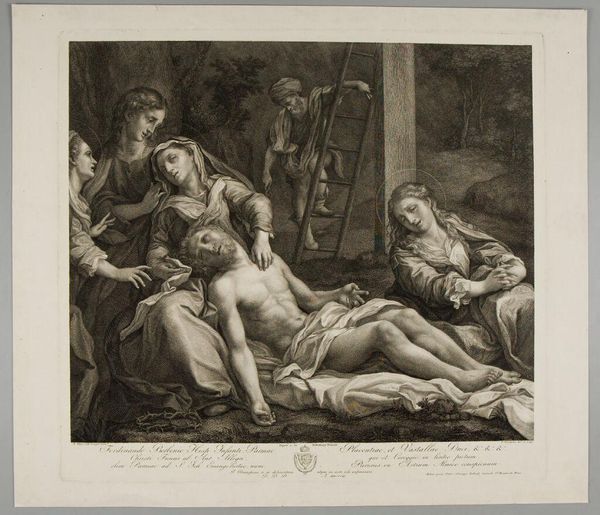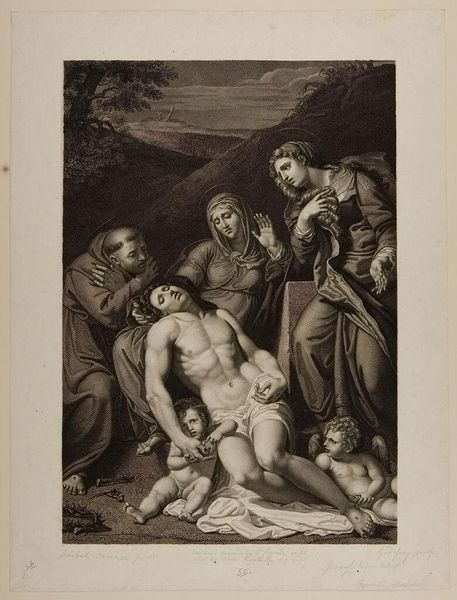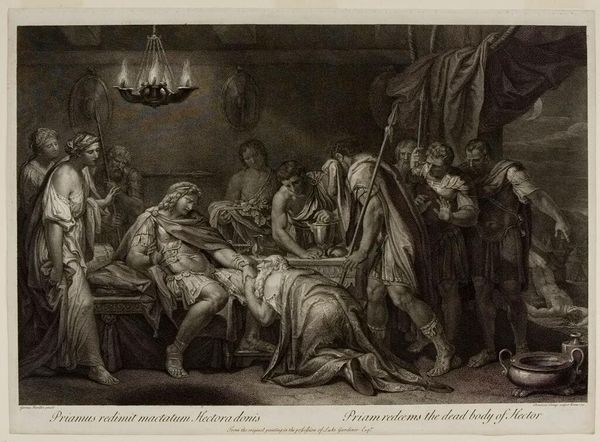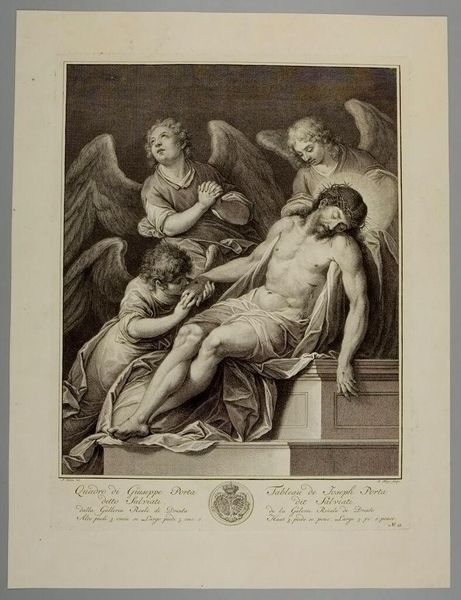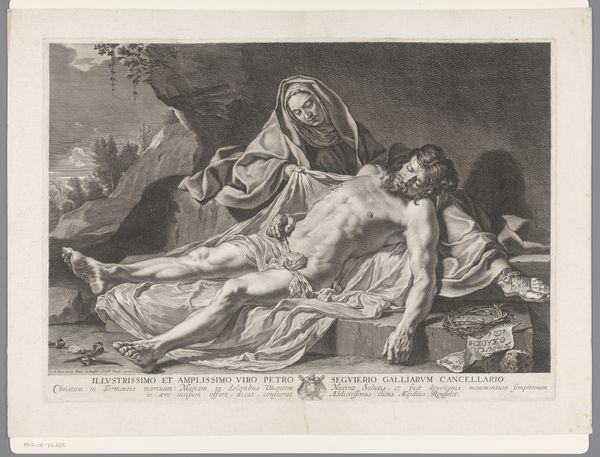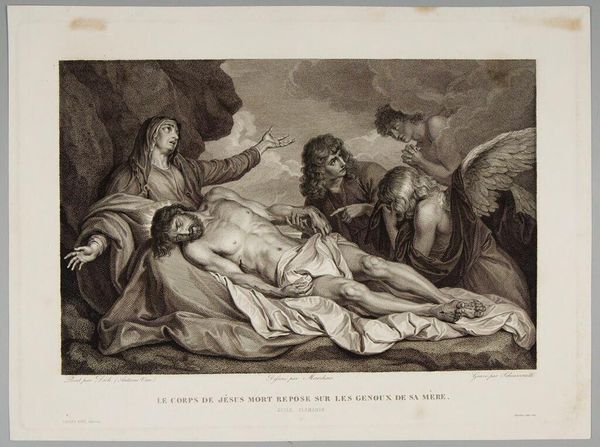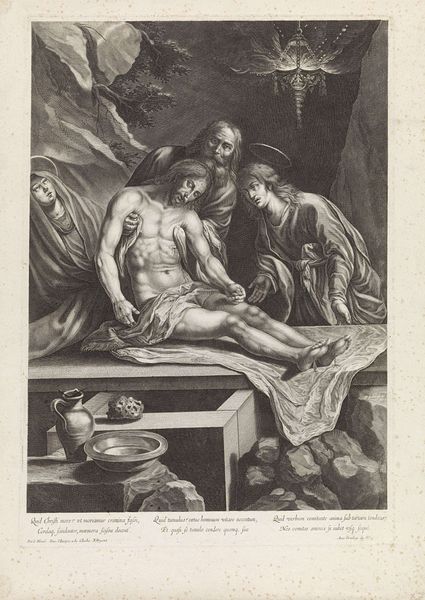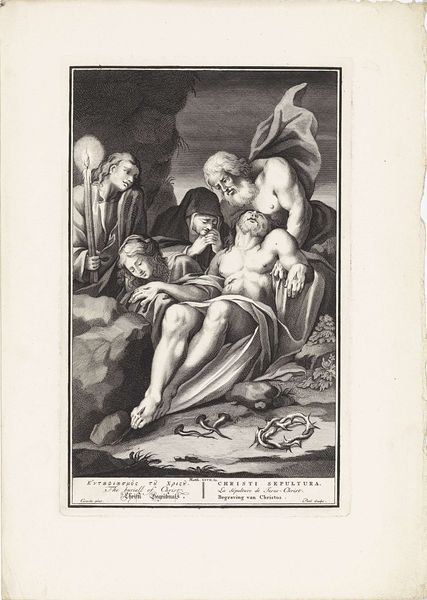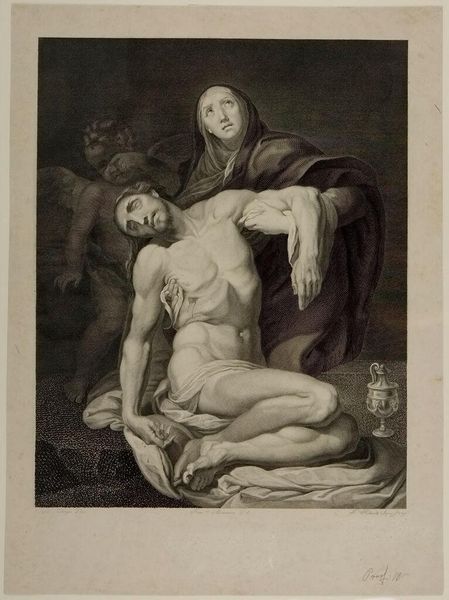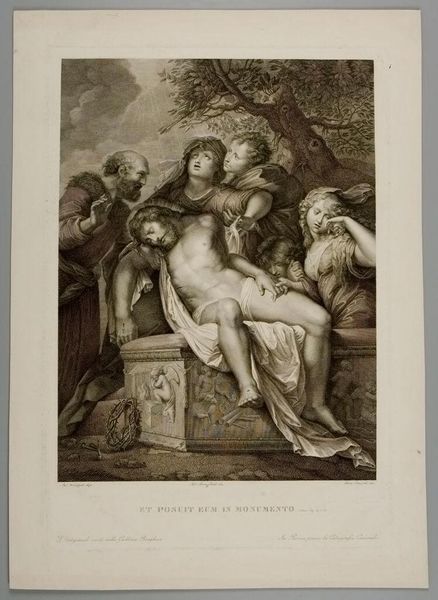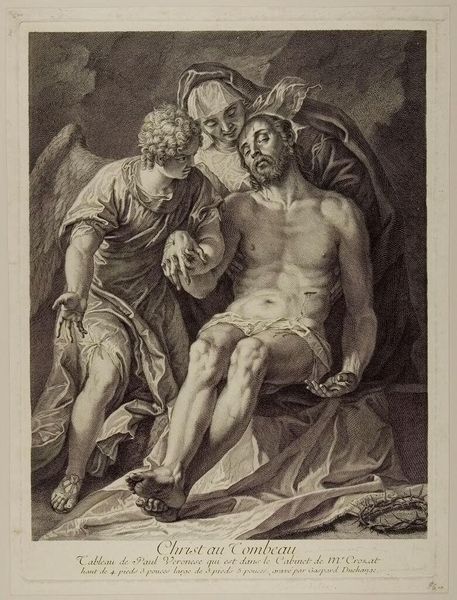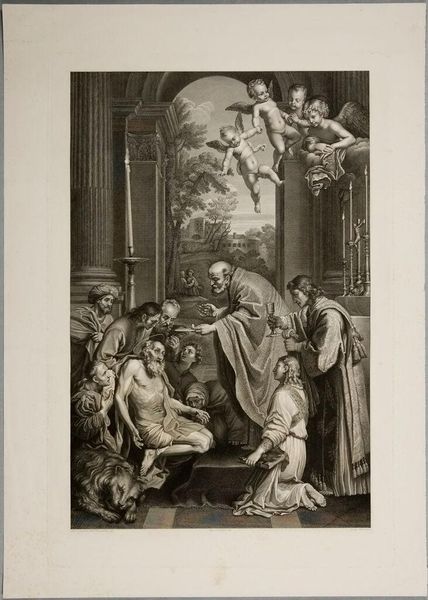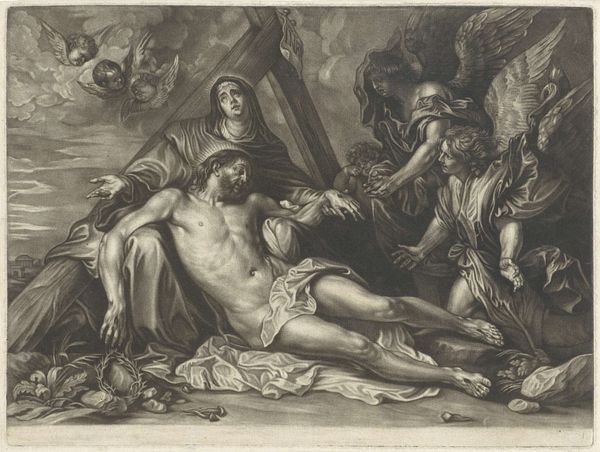
Copyright: CC0 1.0
Editor: This is Antonio Ricciani's "Virgin Weeping over Dead Christ." I see this stark contrast between light and shadow, which amplifies the grief in the scene. What aspects of its composition strike you? Curator: Note how Ricciani has structured the composition through chiaroscuro. The careful balance of light and shadow dictates the viewer's emotional response and guides the eye. Where does your gaze linger, and how does the distribution of value contribute to the overall meaning? Editor: My eyes are drawn to Christ's illuminated body, contrasted with the darker figures of the Virgin and angels. It's very dramatic. Curator: Precisely. The interplay of light and shadow is a structured visual language that can be read as a powerful expression of suffering and sacrifice. It invites us to analyze the structural binaries within the image itself. Editor: I never thought of it that way, seeing the light and shadow as a structured language. Thanks for pointing that out! Curator: Analyzing art through its formal elements can indeed reveal much deeper meanings, no?
Comments
No comments
Be the first to comment and join the conversation on the ultimate creative platform.
